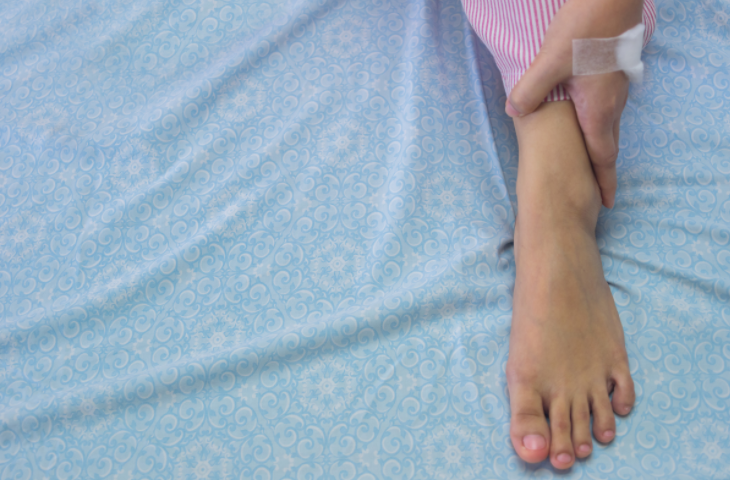What are ankle pumps?
An ankle pump is moving your ankle all the way up (pointing your toes towards you) and all the way down (pointing your toes away from you) without holding either position. Below is a video of ankle pumps which can also be found on our app!
Why are ankle pumps important?
After surgery, swelling around the area of your surgical knee or hip is expected. This is the body’s normal reaction to healing. However, we want to keep the swelling under control as it can be painful and uncomfortable, you can read more about tips to control swelling and how to relieve pain here.
One of the ways to keep swelling under control is ankle pumps – they are easy to do, requires minimal effort and produces little to no pain with MANY evidence-based benefits! These benefits go way beyond controlling swelling - it also strengthens the ankle and the knee joints![1] We've also written a great blog about strength training after your surgery here!
What is the scientific reasoning behind ankle pumps?
Have you ever sat in a position for long periods of time and your legs feel a tingling sensation?
This is because blood collects in the lower legs and the heart pumping alone is not enough to get the blood flowing back to the heart. Ankle pumping exercises use your calf muscle contraction to pump blood back to the heart.[2]
 Image by decade3d from Getty Images via Canva
Image by decade3d from Getty Images via Canva
- Ankle pumps improve circulation in your legs, preventing blood clots - Blood collecting in the lower leg can lead to clotting with long periods of rest or inactivity.
- Movement in the lower leg increases blood flow to the surgical area required for healing.
- Calf muscle movement helps reduce swelling by encouraging fluids back into the bloodstream and back to the heart.
Curovate has all your daily exercises for ACL, total knee replacement and total hip replacement rehabilitation as well as built in reminders and timers for swelling control, and the ability to measure your range of motion! Download the app now with the links below.
If you need further customized assistance during your surgery or injury recovery check out our Virtual Physical Therapy page to book your 1-on-1 video session with a physical therapist.
 |
 |
|---|
Other recommended blogs
- How to measure knee range of motion using Curovate
- How to make your exercises more enjoyable
- How to do your exercises for rehabilitation using home equipment
References
Forrester LA, Schweppe EA, Popkin CA. Variability in rehabilitation protocols following pediatric anterior cruciate ligament (ACL) reconstruction. Phys Sportsmed. 2019 Jun 4;47(4):448–54. ↩︎
Toya K, Sasano K, Takasoh T, Nishimoto T, Fujimoto Y, Kusumoto Y, et al. Ankle positions and exercise intervals effect on the blood flow velocity in the common femoral vein during ankle pumping exercises. J Phys Ther Sci. 2016 Jan;28(2):685–8. ↩︎







